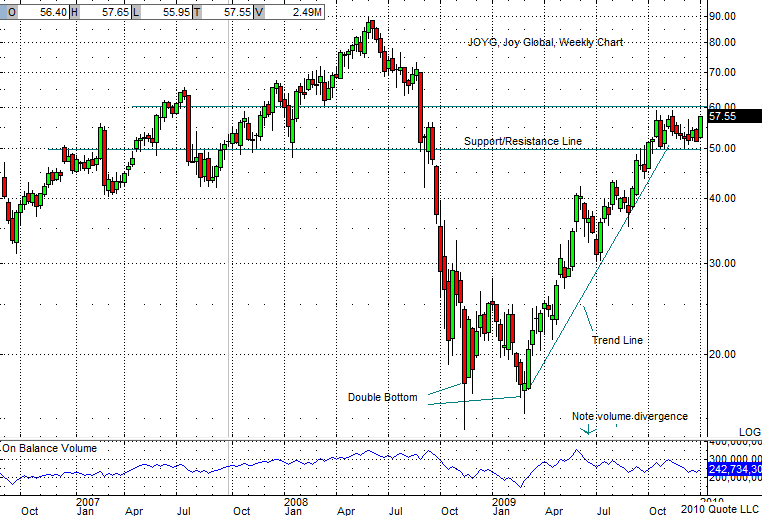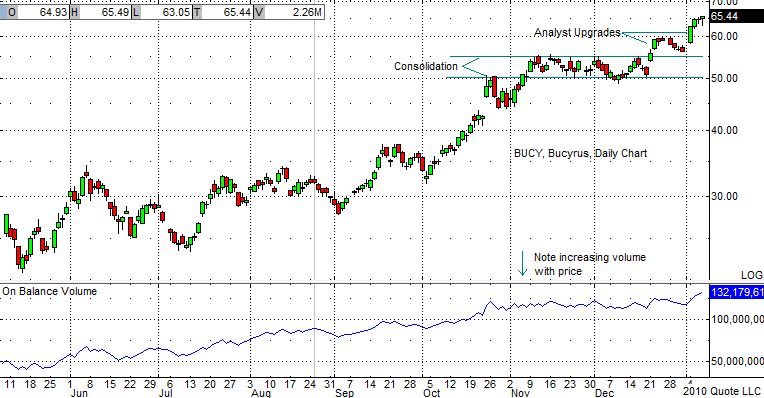So the market is in correction mode and the volatility has increased…what’s a trader to do? Well, one thing one probably shouldn’t do is buy overpriced put protection. The reason is that even if the market goes down, a decrease in the put’s implied volatility can erase any price gains. Instead of buying high volatility, the smart trader instead sells it, and here’s one way to accomplish that.
The covered put, put simply
During market rallies, covered calls offer a fairly conservative way of generating monthly income; during market corrections, the covered put offers a similar situational risk/reward profile. Basically, a covered put involves shorting stock and writing put contracts against the short position. If the underlying stock falls below the strike price, the stock will be “put” to you which you can use to close out your short position.
Caveats
Keep in mind margin requirements for this position and understand that although the credit you receive from selling the put can offset a small loss if your stock starts to rise, it won’t protect you against major losses if the stock rallies violently. Like the covered call, also be aware that the profit made from this strategy is capped by the strike price of the sold put, i.e., the further out of the money the strike, the greater your potential for profit, but at the expense of position risk as we’ll soon see.
Stock selection
Okay. The market is beginning a corrective phase (which you can tell by the fact that good news is met by price declines). Fear and uncertainty are reflected by an increase in market volatility. You think that now might be a good time to reap some of that volatility by selling covered puts, but what stocks should you choose?
You want to find those issues that have a good reason to continue losing steam. They can be found among the following criteria:
1.Companies that miss earnings estimates, and more importantly, those that have lowered future guidance.
2.Those that are being downgraded by analysts. {Analysts typically do this as a reactionary move after a negative event has already occurred, but if the downgrade comes during a period of no news and is based on something different, such as a revised earnings estimate, then I’d give more creedence to it.)
3.Companies issuing bad news such as: a new product that isn’t as well-received as anticipated (the iPad?); a biotech’s latest drug doesn’t pass clinical trials; the company’s novel products suddenly have competitors, etc. And the best of the bad news…
4.Accounting scandals; key management changes; government intervention; new regulations that will adversely affect the company’s bottom line, etc.
Certainly, there are many other reasons why a stock will underperform; these are only a few of the more typical explanations.
A current covered put play: Sandisk (SNDK)
On Friday (1/29), the stock of chip-maker Sandisk (SNDK) fell almost 12% from the close on Thursday to the close on Friday.
Why? On the not particularly bad news that revenues were what analysts expected. (See? This is a sign of a correction in progress!) According to a Wedbush-Morgan analyst, expectations for the company were running high (particularly since it’s part of the iPad story) and investors were disappointed that the company didn’t beat expectations.
Taking in the broader picture, shares of fellow chip-makers Micron Technologies (MU), EMC (EMC), and Seagate (STX) all lost ground along with the semiconductor ETF, the SMH.
Looking at the stock chart of Sandisk, we can see that it gapped through key support at $28. It’s showing minor support at the even $2 levels ($24, $22) with major support at $20.
Using end of day data for stock and options prices, here’s how the February covered put fares for the closest strike prices (the stock closed Friday at $25.42).
 Depending on your risk/reward profile, you can see how investing in OTM (below $25) strikes differs from the ITM (above $25) strikes. If you think that your particular stock and/or the market may rebound before expiration, sell an ITM strike (the exact strike price depending on your degree of unbearishness). On the other hand, if you believe the opposite, sell an OTM strike.
Depending on your risk/reward profile, you can see how investing in OTM (below $25) strikes differs from the ITM (above $25) strikes. If you think that your particular stock and/or the market may rebound before expiration, sell an ITM strike (the exact strike price depending on your degree of unbearishness). On the other hand, if you believe the opposite, sell an OTM strike.
Repair strategies
If the stock in your covered put starts to move up, you can either buy back your put option and close out your short stock position, or keep your short position and roll up your put position to a higher strike price. This is where experience in playing this type of option strategy is very helpful.
Summary
The point of this post is to educate those of you who are options savvy and unafraid of shorting stocks as to a strategy that can be used to your advantage when the market is in a correctional phase. If you need a springboard for candidates to short, check out my Blue Plate Specials that lists the new yearly lows as well as those stocks breaking down. The list is posted daily both here on my website and on SeekingAlpha, usually one to two hours before the market closes. Please remember to do your own due diligence before attempting this type of trade!






